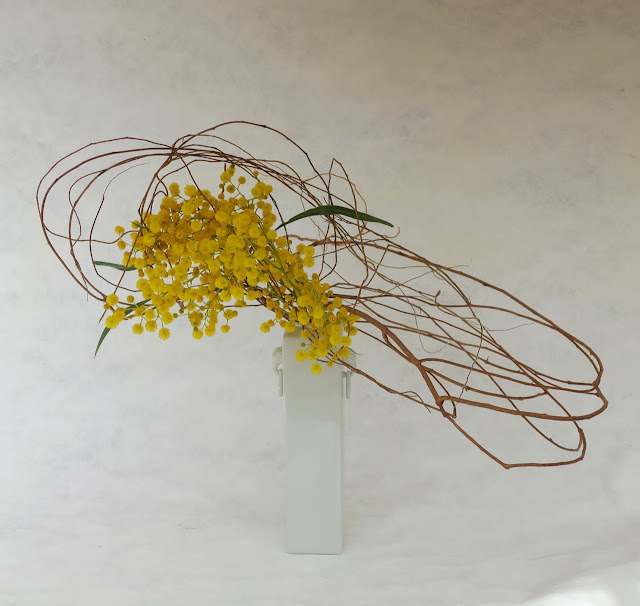
Guess who's coming to dinner? Or lunch? Laurie and I were having our lunch when my eye was caught by the movement of Spike just about to wander under the house.
...and somewhat later in the day we were surprised, and relieved, to find that Spike had safely crossed the road to forage in gardens on the other side. Being small creatures, Echidnas move quite slowly and the road is worryingly wide. Motorists take care!
On a different note, I was very pleased to discover recently that a new shop being opened in Torquay was to be a florist. There has not been a local florist shop since sometime around the middle of last year. It transpired that the new florist had worked in the previous business. I was pleased as this meant that the florist was already familiar with our local community. In seasonal terms, the timing of the opening meant that I was able to buy one of Australia's most spectacular and beautiful flowers, the Waratah, Telopea speciosissima, the floral emblem of New South Wales.
It has a large brightly-coloured inflorescence, being made up of many smaller flowers. The stems are very strong and, when grown commercially, quite straight. These features create constraints for the ikebanist. My first thought was what other material could I use that would not look too weak when combined with the two bold flowers that I bought.
I decided to re-use one of the dried banana palm leaf-bases, which also provided a structure with some sense of movement that was not present in such strong straight stems as the flowers had. The banana palm leaf-base was curled in a corkscrew fashion which allowed me to insert the tallest Waratah through it and then secure both within the cylindrical vase. I placed the second flower facing forward and to the right reinforcing the sense of movement.
In our garden a similar intense red has also appeared. It is the largest of our four Bottle-brush bushes, Melaleuca viminalis, now about thirty-five years old and four metres tall. As you can see, the flowering is quite dense this year; undoubtedly brought on by the extra, and welcome, spring rains this year. I had been thinking about it as an ikebana subject for a little while. On Friday morning I lay in bed wondering what vase would suit it and suddenly I realised that the warm orange of the blossom vase by John Dermer would work well.
 |
The blossom vase is made by the Terra Sigillata technique in which a slip coating of microfine particles is applied to the vessel. John Dermer has first impressed a rope pattern onto the vessel and, before firing, has wrapped it with Casuarina needles and salts which have burnt away during the firing. This has left an imprint on the surface in a manner similar to Bizen firing techniques.
Greetings from Christopher
31st October 2020.





































